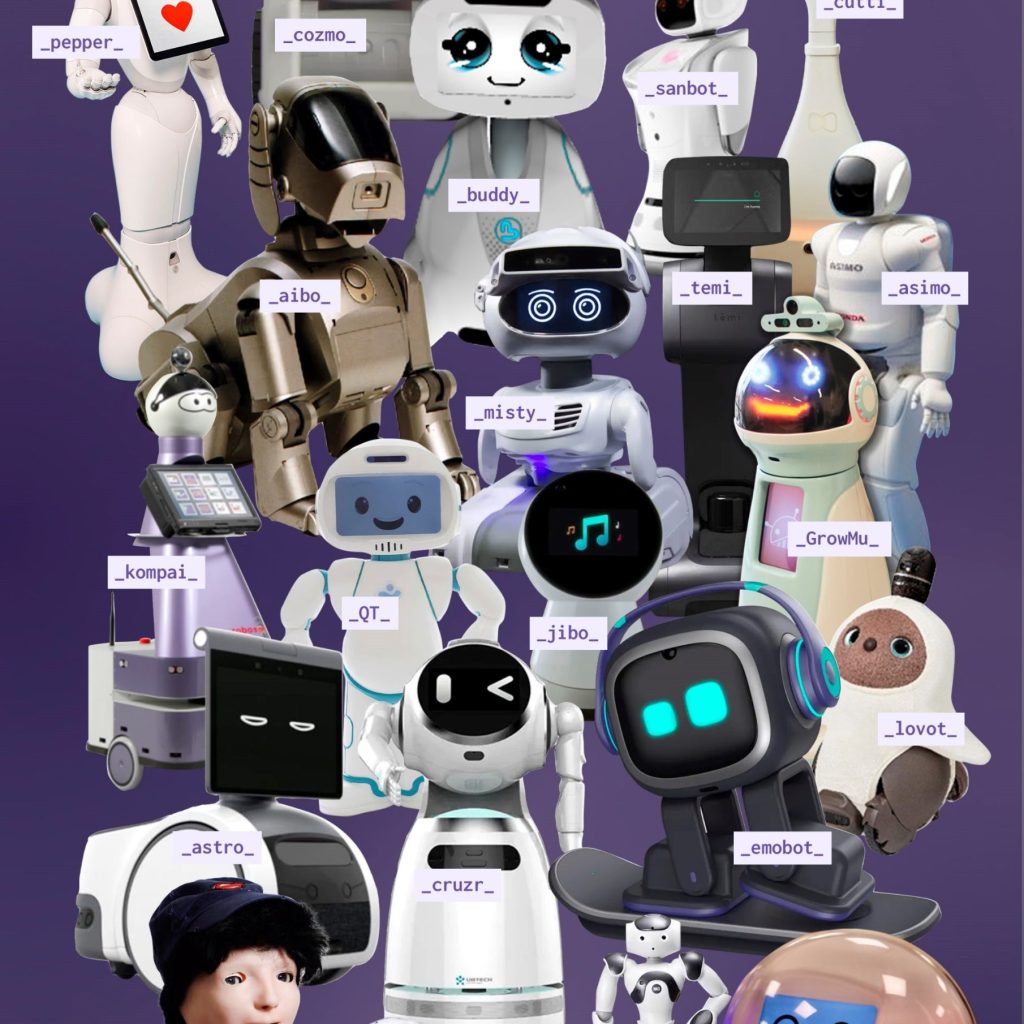Social robots have been long under development. What about implementation? LIFEBOTS Exchange suggests future actions. COMFORTage will pilot the use of social robots.
What did LIFEBOTS Exchange do?
LIFEBOTS Exchange is a 5-year project that ends by February 2025. It has focused on the uses that can be made of social robots and developed various scenarios/use cases. It has supported secondments and exchanges between early career employees, largely from health, care, and academic institutions, and engineering firms. The people involved in the exchanges have come from several countries in the European Union, and beyond. Study visits were also made by company representatives to Japan and South Korea. LIFEBOTS Exchange also organised several workshops.
On coming to the end of the project, LIFEBOTS Exchange produced a small booklet, based on its work. It look a look at more than 20 social robots.

Five blocks for future action were highlighted in the booklet: policies, ethical and legal principles, readiness levels, organisational methods and tools, and financial issues.
The project also undertook a survey with its consortium members. It collected the opinions of respondents on emerging and future trends with social robots. Respondents offered a range of views on: advantages, obstacles, preparations needed, policy actions, financial assistance, and key priorities. Similar to COMFORTage’s methodologies, the preparatory actions included collaborative development processes.
Three major take-aways, which may be of interest as the COMFORTage pilots advance are:
- Social robots transcend traditional robotics.
- Development requires an interdisciplinary approach.
- Implementation hinges on a multi-level strategy.
As LIFEBOTS winds down, in terms of next steps, the baton can now be taken up by projects like COMFORTage.
What is COMFORTage planning?
COMFORTage is a much larger project than LIFEBOTS Exchange. It is one year into its work. The consortium aims to run up to 13 pilots. Its five ‘pilot clusters’ are centred on the critical issues of dementia and frailty. Many of these will start to operate during 2025.
While COMFORTage’s preoccupation is on ways of alleviating dementia and frailty throughout the life-course, one of the technologies it is exploring is social robots. Its pilots focus on older adults.
At least two pilots will take place in Living Labs and Digital Innovation Labs in Greece and Spain. They include CERTH’s nZeb Smart House testbed – Greece’s first smart house to resemble a domestic building – and INTRAS’s MINDLAB. Among the social robots to be tested are CERTH’s prototype, CERTHBot, and Pepper, one of the earliest-available social robots. Older adults, carers, and health and care professionals’ responses and reactions to these social robots will be explored in focus groups and through interviews or surveys.
COMFORTage will start to explore more exactly what its pilots will be doing on social robots from May 2025 onwards.
What’s in it for people wanting to experience interactions with other projects on social robots ?
Interactions between projects can be very useful. Much that has been learned over recent years can be transferred into, and built on, by new projects. Hence: from LIFEBOTS to COMFORTage.
A useful step forward would be to introduce LIFEBOTS Exchange consortium members to the work of COMFORTage. Options could involve the various communities and networks that COMFORTage is building, but more direct engagement might be in at least two of the COMFORTage pilots on co-creation.
Let’s see how this experience-sharing and knowledge-sharing on social robots affects the successful improvement of the quality of life of health and care end-users, their carers/family members, and professional employees too!
Sources
LIFEBOTS Exchange: https://lifebots.eu
LIFEBOTS Exchange Extended: https://lifebots.eu/lee
**Article written by European Health Telematics Association (EHTEL), a key partner in the COMFORTage project.
